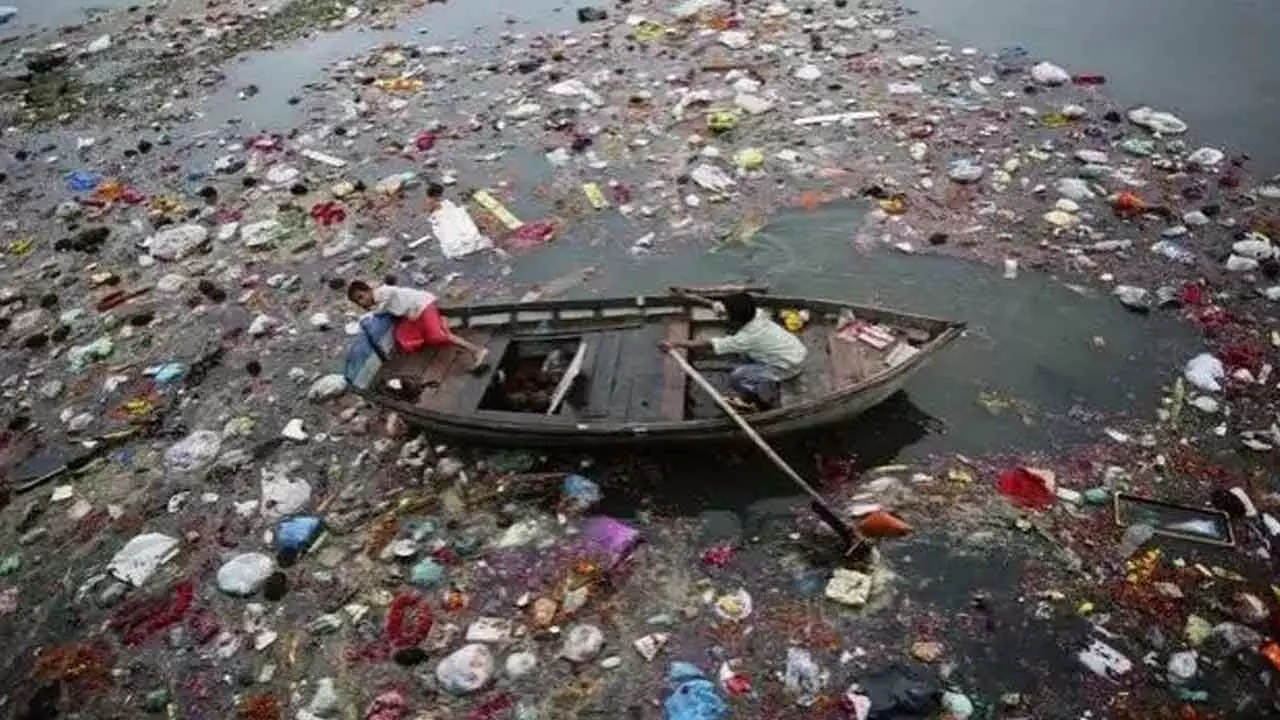From Crores To Course Correction: The Yamuna Needs Smarter Action
Delhi boasts 37 sewage treatment plants and 80% sewer connectivity, yet Yamuna stays choked with waste. A new CSE report calls for a shift in focus to real outcomes rather than infra alone
From Crores To Course Correction: The Yamuna Needs Smarter Action

Between 2017 and 2022, the Delhi government spent over Rs 6,856 crore to clean the Yamuna, commissioning 37 sewage treatment plants (STPs) and expanding sewer coverage to 80 per cent of the city. But despite the massive investments and infrastructure, the river remains toxic and biologically dead for most of its 22-kilometre journey through the capital.
A new assessment by the Centre for Science and Environment (CSE), released at a press briefing in Delhi on Wednesday, attempts to unravel the reasons behind this persistent failure and proposes a five-point action plan that could finally bring the river back to life.
Titled Yamuna: The Agenda for Cleaning the River, the report highlights a stark reality: the short stretch of the Yamuna in Delhi contributes over 80 per cent of the pollution in the entire river basin. For nine months a year, there is no real river flow—only a stream of untreated or partially treated sewage from the city’s 22 drains.
“The Yamuna ceases to exist as a river once it enters Delhi at Wazirabad,” said CSE Director General Sunita Narain. “Despite crores spent and decades of planning, the city continues to discharge its waste into a river that is already dry. A dead Yamuna is not just a blot on Delhi’s conscience but also a serious public health and water security challenge for downstream cities.”
Narain stressed that the solution lies not in more money but in smarter, outcome-driven planning. “We must think differently. We’ve built infrastructure without tackling the core problems—data, enforcement, and waste management at the source.”
Why is the Yamuna still so polluted?
The report identifies several key reasons for the persistent pollution:
• Lack of accurate data on wastewater generation: In the absence of recent census figures and clear data on unofficial water sources like groundwater and tanker supplies, authorities do not have a reliable estimate of Delhi’s total wastewater output. This hampers effective planning.
• Faecal sludge from unsewered areas: A large part of Delhi depends on desludging tankers. These often dump untreated sludge into drains or directly into the Yamuna, undermining the gains made through STPs.
• Mixing of treated and untreated water in city drains: Although 22 major drains are supposed to carry treated water, they also receive waste from unsewered colonies and illegal connections. As a result, clean water from STPs gets re-contaminated before reaching the river.
What has been done so far?
To its credit, both Central and Delhi governments, as well as the courts, have made serious efforts to tackle Yamuna pollution:
• STP capacity expansion: Delhi has built 37 sewage treatment plants with a combined capacity to handle over 84 per cent of the city’s sewage. The target is to treat 100 per cent of sewage by June 2025.
• Stricter discharge norms: Delhi has enforced tighter STP standards—10 mg/litre for Biochemical Oxygen Demand (BOD), compared to the national standard of 30 mg/l. However, a 2024 Delhi Pollution Control Committee (DPCC) report found that 23 out of the 37 STPs failed to meet even these stricter limits.
• Interceptor sewers: The Interceptor Sewer Project was designed to divert up to 1,000 million litres per day (MLD) of sewage to treatment plants before it reached drains. However, its impact has been limited.
• Expansion into unauthorised colonies: Over 1,000 new sewage pipelines have been laid in unauthorised areas, with many more under construction.
• Industrial pollution control: Of Delhi’s 28 industrial clusters, effluents from 17 are routed to common treatment plants. But concerns remain about treatment quality and where the cleaned water is eventually discharged.
Yet, according to DPCC data, the Yamuna is effectively “dead” just a few kilometres after entering Delhi. At ISBT, the Biological Oxygen Demand level drops to zero—indicating no aquatic life.
What needs to change: CSE’s five-point action plan
The CSE has proposed a clear, practical roadmap to address the failings:
1. Treat faecal sludge from unsewered areas: Desludging tankers must be registered and tracked via GPS. All collected sludge should be sent to treatment facilities rather than dumped illegally. This is a faster and more cost-effective strategy than laying new pipelines.
2. Prevent mixing of treated and untreated water: STPs should not discharge treated water into polluted drains. Instead, dedicated infrastructure must ensure clean water is kept separate and directed safely.
3. Increase reuse of treated wastewater: Currently, only 10–14 per cent of treated wastewater is reused. Each STP should have a specific reuse plan, such as supplying water for horticulture, industry, or construction.
4. Link STP upgrades to reuse potential: Delhi’s stricter effluent standards are appropriate for discharge into a non-flowing river, but STP upgrades should be aligned with actual plans for water reuse, making them more cost-efficient.
5. Rework strategies for Najafgarh and Shahdara drains: These two carry 84 per cent of Delhi’s pollution load. Despite investment, the interceptor sewer plans for these drains have failed to deliver. The city must urgently revisit its approach to these critical sources of pollution.
A river worth saving
The CSE report concludes that Delhi must move away from an infrastructure-focused model toward a performance-driven approach. The technology exists. The funds have been allocated. But unless governance, enforcement, and planning align with ground realities, the Yamuna will continue to be a cautionary tale of how not to clean a river. “We’ve spent the money. Now it’s time to make it work,” said Narain. “A clean Yamuna is not a dream—it’s an achievable goal. But only if we change course.” (cseindia.org)

